
'Atholl'. The signpost caught my eye. Ask someone in Inverness or Perth how to get to Atholl and they will look at you strangely - even though it lies about half way between the two on a main road through the Highlands. 'Atholl' is a bit like 'Mar', or 'Breadalbane': mostly used by historians - and by the tourism industry which thrives on the romantic resonance. Atholl was a powerful celtic earldom around the eleventh century when MacBeth was on the throne; today the name survives in the small town of Blair Atholl, the title 'Duke of Atholl', and a hill on the south of the Drumochter Pass called the 'Sow of Atholl' - which butts up against the 'Boar of Badenoch' to its north (a medieval joke still included on 21st century maps!).
Having parked the car near Kingussie at Ruthven (famous now mostly for the impressive ruined barracks) I checked the signpost and set off on my cycle ride to 'Atholl via the Gaick and Minigaig'. This route used to be known as 'Comyn's Road, since until the time of Robert the Bruce, this was Comyn country; later it was the MacPhersons who held sway. It is the shortest route south from Kingussie and all points north, and was the only one marked on maps until 1725, when General Wade chose the longer route by Drumochter Pass for his groundbreaking 'military road'. Now both the arterial A9 road and the railway follow Wade's route. He probably rejected Minigaig due to the incidence of avalanches there and I noticed (good excuse for a break from the saddle) that at Gaick there is still a monument to a Captain John MacPherson of Ballachroan who was killed in an avalanche along with four 'companions in the chase' in 1800. So Wade probably made a good decision, despite the old 'Comyn's Road' being fifteen miles shorter. And after the building of his smart new road through Drumochter, the Minigaig pass became, logically perhaps, 'The Summer Road to Ruthven'.
The route up Glentromie to Loch an t' Seilich is wild, beautiful, and easy cycling, but after about 12 miles, by Loch na Dun, the track becomes a footpath and a concealed boulder threw me off the bike and very nearly into that very remote loch. The next five miles was on a gentle downward track and soon I was through the mountains and transferred my loyalty to General Wade's road, (much of which is in use once again as a cycle track) for the homeward journey. Returning that way is of course much longer than 'The Summer Road to Ruthven' but easier going. Pedalling up and through the Drumochter Pass, scene of so much history, was satisfying, but it was a weary blogger who took this shot of Ruthven Barracks late that afternoon.
 General Wade built 240 miles of military roads in the Highlands. He is also the only commoner to appear in the National Anthem:
General Wade built 240 miles of military roads in the Highlands. He is also the only commoner to appear in the National Anthem:"Lord, grant that General Wade,
May by thy mighty aid,
Victory bring.
May he sedition hush
and like a torrent rush,
Rebellious Scots to crush,
God save the King."
May by thy mighty aid,
Victory bring.
May he sedition hush
and like a torrent rush,
Rebellious Scots to crush,
God save the King."
...which is an interesting reflection on English attitudes to the Scots forty years after the birth of the 'United Kingdom' - once again under threat (we are told) if the Scottish National Party win the election in two weeks time on 3 May.
Anyway, General Wade certainly has his place in history even if poor old Atholl still needs historians, tourist guides, weary cyclists and the Scottish Rights of Way Society for its survival.










































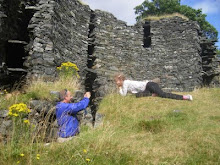
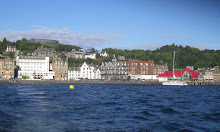
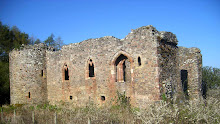
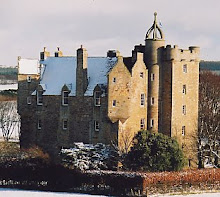
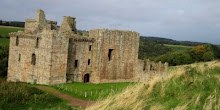

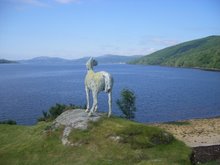

No comments:
Post a Comment